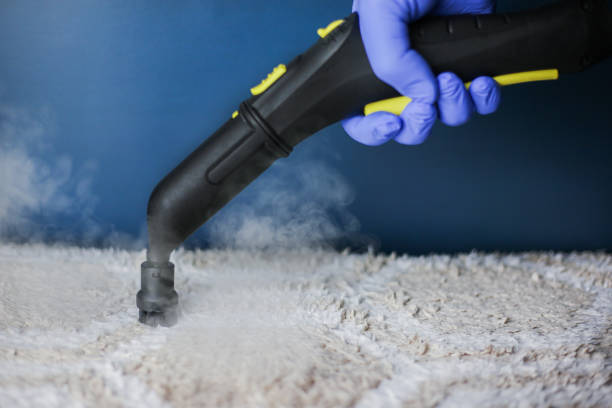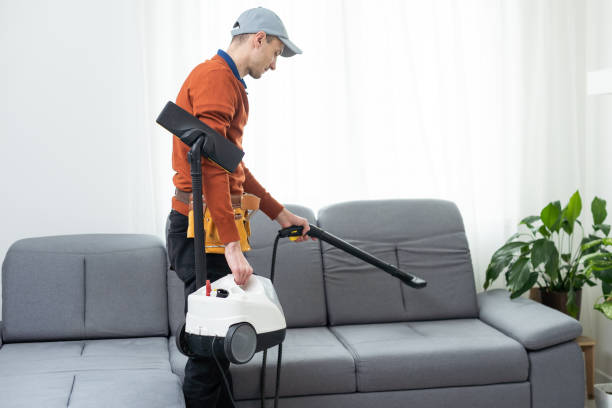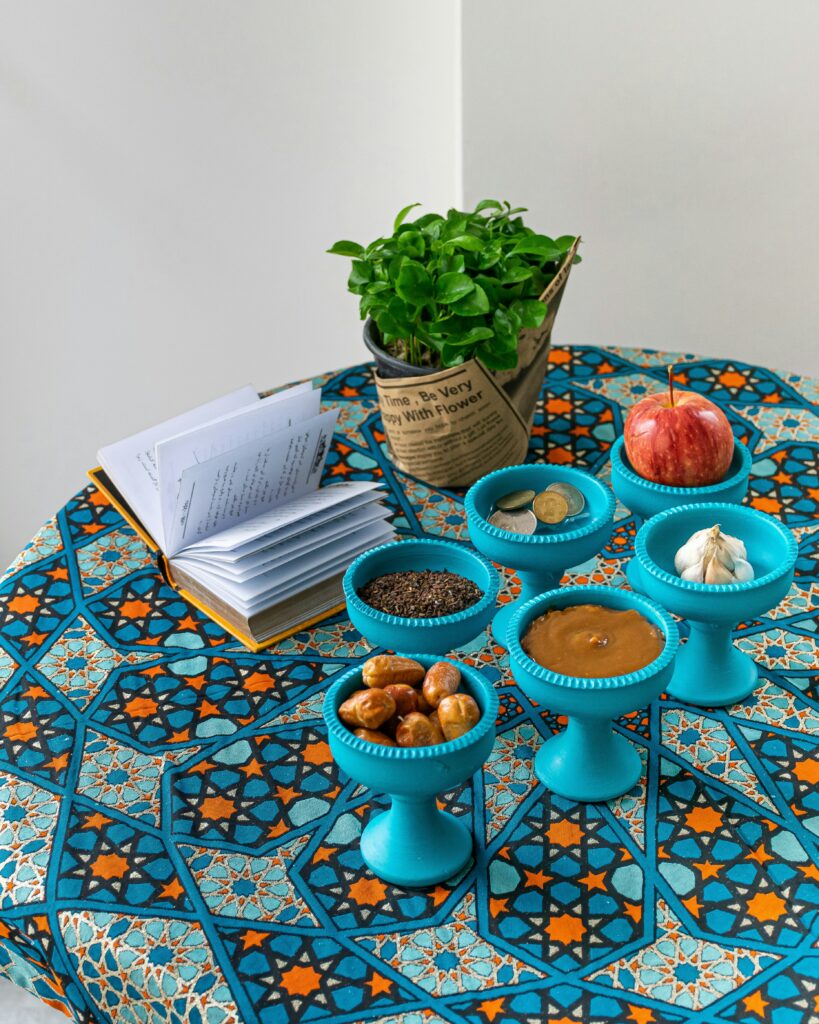Unlike many chemical cleaners that leave behind streaks and moisture damage, steam cleaning leaves surfaces spotless. It also helps remove the microscopic allergens that impact indoor air quality.
The process begins with a thorough assessment of the fabric type, stains, and conditions. Stubborn stains may require pre-treatment.

1. Remove All Debris
A steam cleaner heats water past its boiling point and releases it as pressurized vapor. Tiny vapor molecules penetrate microscopic pores and expand to force out dirt, grease, and stain-causing substances. The vapor also kills dust mites, viruses, and bacteria. This natural, chemical-free cleaning solution is safe to use on a wide range of surfaces in the home including sealed tile, grout, granite countertops, wood floors, carpets, furniture and mattresses.
Steamers typically come with a variety of attachments to allow the user to clean different surfaces. For instance, a nozzle and brush allow the steamer to remove sticky dirt that would otherwise require harsh chemicals to dissolve. Steamers can even be used on greasy or oily kitchen countertops, stovetops, and sinks. They can also be used on a wide variety of floor types including wood, laminate, vinyl and polyurethane.
Steamers are ideal for removing stains from upholstered furniture. The vapor produced by the machine softens stains and can even eliminate odors. In addition, a steamer can be used to clean bathroom surfaces and sanitize them. This will reduce the amount of mold and mildew that can build up in the bathroom, which can cause health problems for families with small children. A steamer can also be used to sanitize rubber toys, stuffed animals, high chairs, playpens, strollers, and car seats.
2. Clean the Upholstery
With the help of upholstery cleaning Melbourne, you can easily remove stains, dirt, grime and bad odours from your fabric furniture. It is safe for all kinds of upholstered furniture and fabrics. It can also sanitize surfaces and kill mildew, mold, germs, dust mites, and pet hair.
Start by vacuuming the upholstered furniture. This will remove any loose dirt that is still present, so it doesn’t get mixed in during the cleaning process. It is important to vacuum all crevices and sides of the furniture, including the back and cushions.
Next, switch on your steam cleaner and begin steaming the couch. Start with a small area at a time to minimise the risk of oversaturation and damage to the fabric. Use a brush attachment to reach hard-to-reach areas. Continue to steam in small sections until the entire upholstery is clean.
Using the steam cleaning Melbourne with a special pre-treatment can make it even easier to remove stubborn stains. Follow the instructions on the label to determine the best treatment method for your upholstered furniture. It is recommended to test the product in an inconspicuous area first. After the treatment, use a damp cloth to wipe away any remaining moisture and residue. Then allow the furniture to dry completely before using it again. If you have a particularly stubborn stain, try sprinkling baking soda over it.

3. Remove Allergens
Aside from removing dirt, dust and debris from upholstered furniture, steam also eliminates the allergens that can trigger asthma and allergies. As such, steam cleaning is one of the most effective and natural ways to keep your family healthy.
Instead of relying on chemical cleaners, which emit harmful fumes and leave behind residues, steam vapors are completely safe to use in any home. Plus, the lack of chemical cleaners means that you won’t be subjecting your family to toxic chemicals, which are linked to serious health conditions, including cancer.
Additionally, the low moisture in steam opens pores and allows it to deep clean surfaces without saturating them. As a result, it can also kill bacteria, germs and other pathogens that lurk in upholstery. Steam cleaners can also freshen and deodorize, which is an excellent way to sanitize your entire house while removing those annoying household odors that can make you and your family sick.
Before using your new steam cleaner, always check the manufacturer’s recommendations for a list of surfaces and materials that can be safely cleaned with it. Some surfaces such as unsealed hardwood floors, some laminates and stucco shouldn’t be exposed to steam because it can cause them to warp or damage. However, most surfaces can be sanitized with your steam cleaner, including tile floors, counters, glass shower doors and even baked-on grills.
4. Remove Stains
A steam cleaner heats water to high temperatures that quickly and safely dissolves gunky, sticky mess. This makes it the perfect solution to remove stains from the home. The teeny-tiny vapor molecules penetrate the pores of the surface and force out dirt, grease, detergents, odors, mildew, and other particles that don’t belong on the surface. The extreme temperature of the vapor also kills bacteria, germs, fleas, and dust mites.
Before using your steam cleaner on the fabric, test the temperature of the water on a small area. If it’s too hot, the fabric will be damaged. If it’s safe, then you can start cleaning the fabric with the nozzle or brush attachment. Start at the corners and work your way toward the center of the room. Continue working in a pattern to prevent missing any spots. If the fabric is particularly dirty, consider pretreating it before steam cleaning. This will help prevent going over the same spot multiple times, which could lead to water logging and mold growth.
The best part is, there’s no need to use any chemicals when you’re steaming. Steam is a natural and effective alternative to chemicals that can be dangerous to children and pets. It’s especially ideal for cleaning and sanitizing areas of the house that are difficult to reach with traditional cleaning methods, such as those in and around the toilet. It’s also great for the nooks and crannies of cabinets, the lining of the garbage can, and even on kitchen appliances to get rid of burnt-on food and grease.

